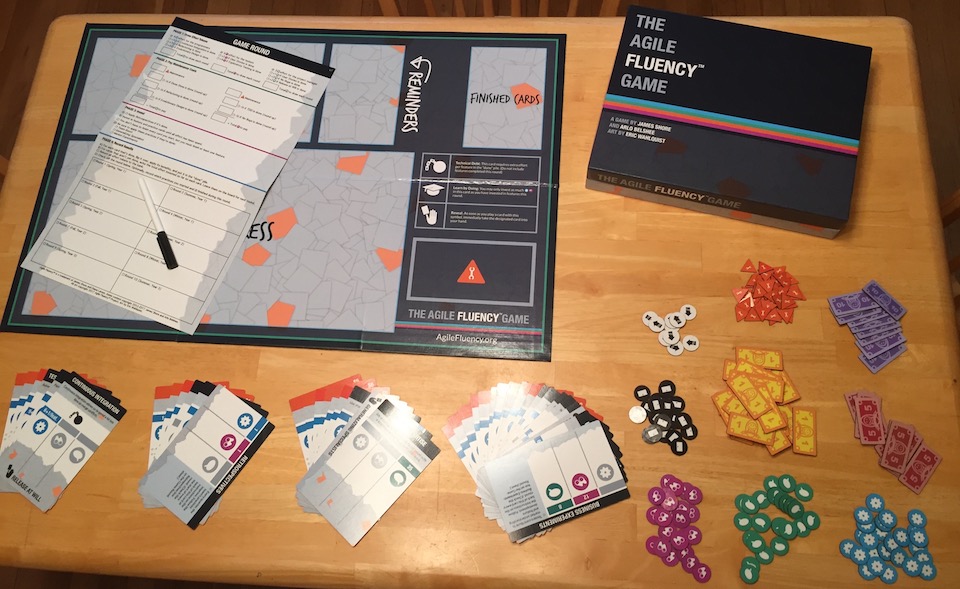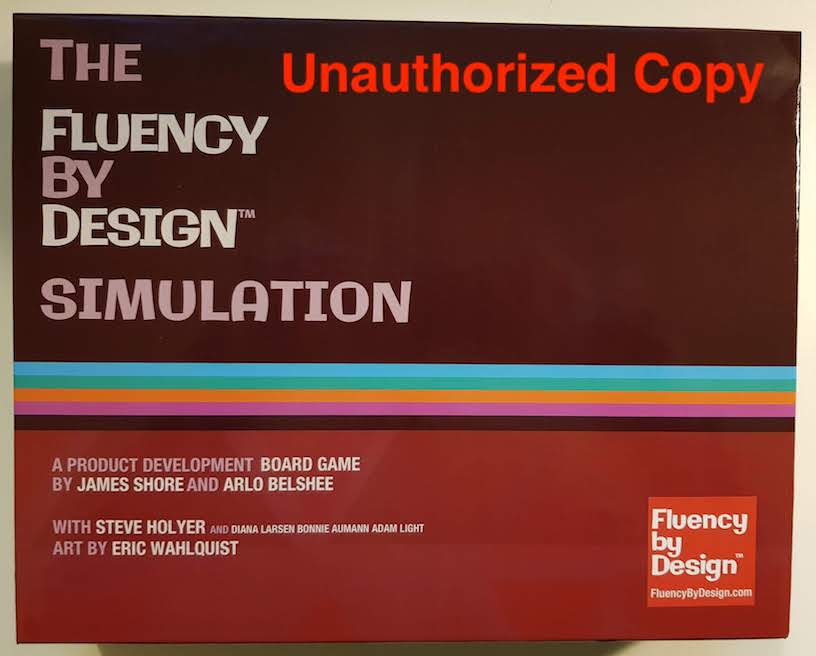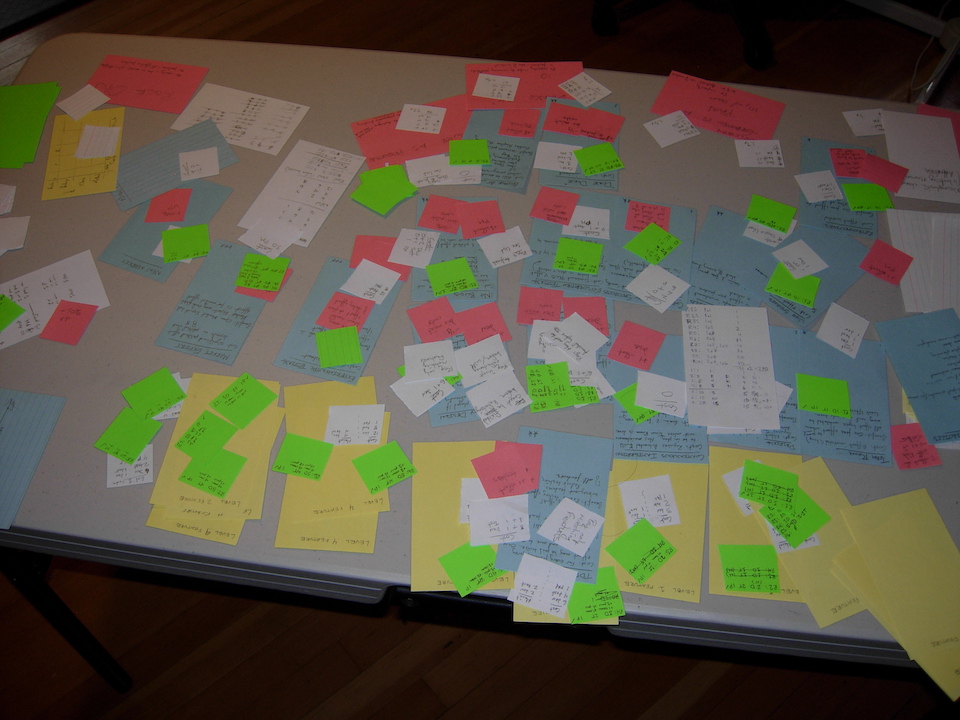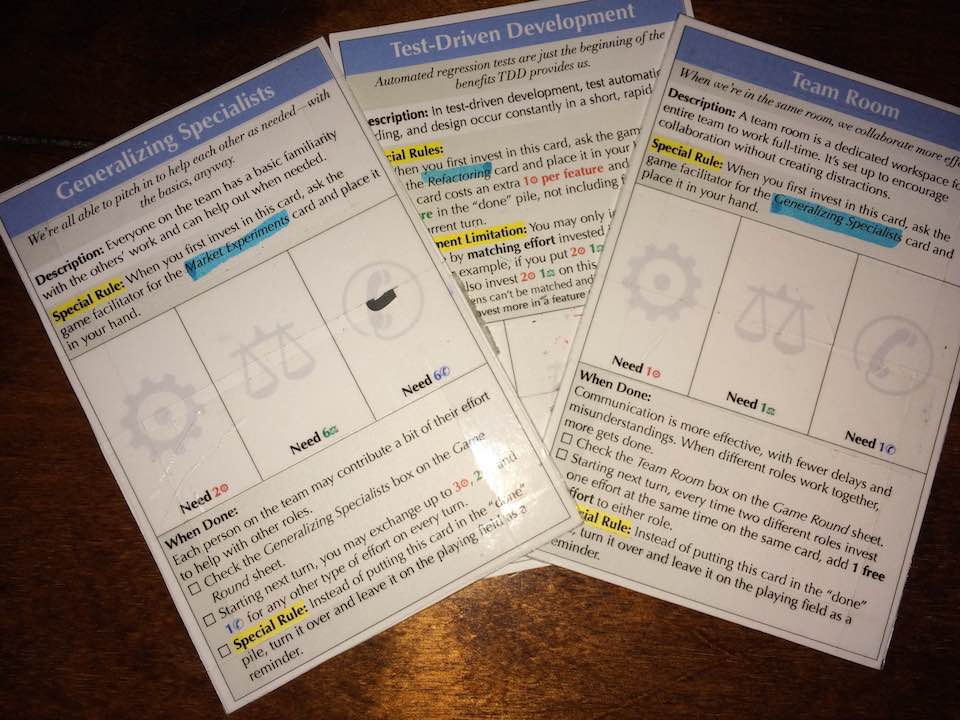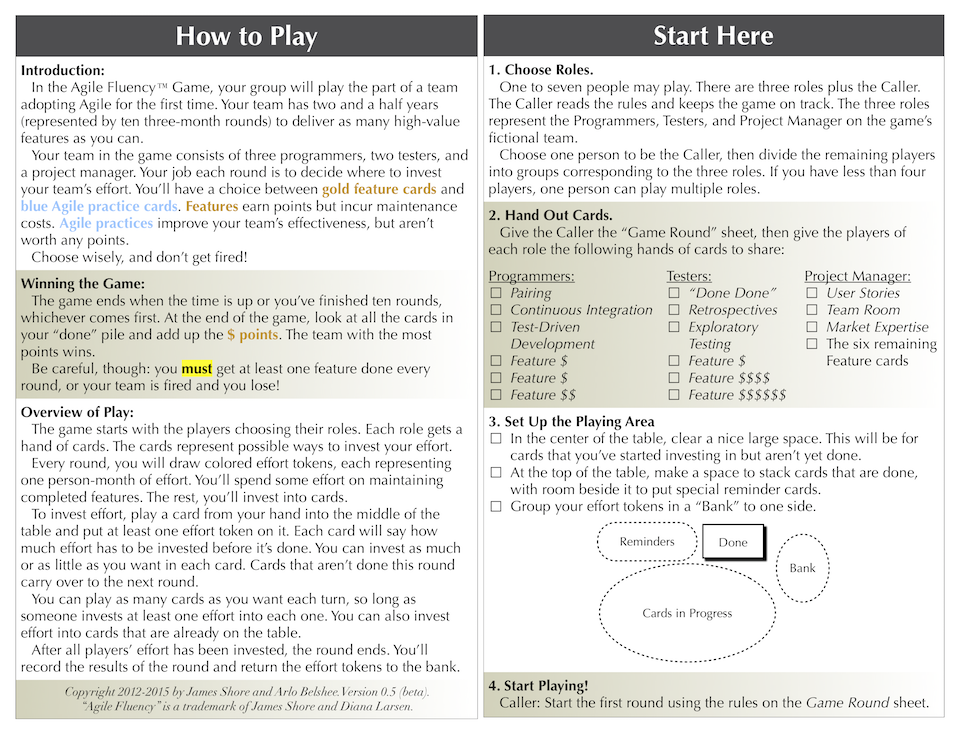FluencyByDesign Game is a Bootleg Copy of Agile Fluency Game
January 29, 2019
I was shocked and disappointed to learn yesterday that Steve Holyer has made an unauthorized copy of The Agile Fluency* Game called "The FluencyByDesign* Simulation." I created this game with Arlo Belshee in 2012 and spent five years playtesting and refining it. Steve Holyer replaced our name, trademark, and branding with his own and sold copies of his version for thousands of euros.
*"Agile Fluency" is a trademark of James Shore and Diana Larsen. "FluencyByDesign" is a trademark of Steve Holyer and Associates.
The Agile Fluency Project, which I co-founded with Diana Larsen, is the only authorized publisher of the Agile Fluency Game. We at the Project are taking the appropriate legal steps. In the meantime, if you see copies of the bootleg version, please let the owner know they have an illegitimate version. We are replacing unauthorized copies at our expense. Write to info@agilefluency.org for details.
Five years later, the publication rights have reverted back to me. Please contact me if you still have a counterfeit copy and would like a replacement.
Please note, although Steve Holyer added several other people's names to the credits on his copy, they had nothing to do with Steve's bootleg. Please don't harass them.
The Details
As much as I would like to leave it there, I know some of you will find such blatant copyright infringement hard to believe and will want more details.
The short version is that Steve Holyer was a contributor to the Agile Fluency Project in 2016 and 2017. During that time, he had access to all our files. He must have kept a copy of them after he left the Project, because sometime in 2018 he used our game assets to publish his own version. Why he did this, and how he thought he could do it without getting caught, remains a mystery to me.
Here's the timeline of events:
Summer 2012. Arlo Belshee and I create the game for an Agile 2012 conference presentation called "This one goes to 121."
8 August 2012. Diana Larsen and I write about our work on the Agile Fluency Model. Martin Fowler publishes it for us. Steve Holyer is one of several reviewers.
2013-2016. I playtest the game at conferences and with clients, refining the game through six versions. I share copies with a few trusted colleagues for them to use with their own clients.
April 2015. Diana Larsen, Adam Light, and I host the first Agile Fluency Gathering at Diana's house. It's an intimate gathering with 15-20 attendees. We share Diana and Adam's work on what would become the Agile Fluency Diagnostic and ask the participants where we should go next with the Agile Fluency Model. Steve is one of the attendees.
May 2015. Diana and Steve host the "Agile Fluency Immersion" workshop in Germany. With my permission, Diana incorporates the game into their workshop materials.
15 July 2015. Adam Light, Diana Larsen, and I found Agile Fluency Project LLC to respond to people's interest in the model.
26 Oct 2015. Steve sends me an email asking permission to use the game in his workshops. He writes, "Since [Diana and I] had such a great result, I'd like to confirm with you that it's OK to keep using the game in Agile Fluency workshops that Diana and I run or that Diana and I run separately. I'd also like to use it occasionally with clients not directly related to the Agile Fluency Model. I understand that you aren't ready to release the game, but I am hoping that you feel comfortable with me using it occasionally."
27 Oct 2015. Arlo and I give Steve permission to use the game in his workshops. I send him v0.5 of the game. This version is functionally identical to today's published version. I ask for Steve's playtest feedback.
11 Dec 2015. Steve provides playtest feedback, including a few minor suggestions that I incorporate, such as numbering the cards and clarifying which cards the PM gets. This, and similarly minor feedback in 2016, is the extent of Steve's creative contribution to the game.
31 Dec 2015. Based on Steve's history with Diana and the Agile Fluency Model, Adam Light sends Steve an email saying he'd like to talk about "joining forces to move the Agile Fluency Project forward." He agrees to join the core team on 6 Jan 2016, although the relationship isn't formalized and Steve doesn't join the Project full time.
Jan 2016 - Apr 2017. Steve is a member of the Agile Fluency Project's core team which consists of Diana, Adam, Steve, myself, and another contributor who isn't part of this story. He is involved with a variety of marketing, sales, and planning efforts and has full, trusted access to everything we do.
Mid 2016. Arlo and I give the Agile Fluency Project permission to publish and sell the game. Steve takes point on figuring out printing and publication and settles on a print-on-demand publisher.
July 2016. I rebuild the game assets in InDesign, creating v0.6 of the game. Steve uses them to print a prototype box set that we show off at Agile 2016 at the end of July. To the best of my knowledge, this is the end of Steve's involvement with producing the game.
Feb - Mar 2017. Adam Light, acting on behalf of the Agile Fluency Project, hires Eric Wahlquist to produce production-grade art for the game. Eric is an experienced graphic designer and game designer. I work closely with him to produce the final game assets, which we call v7, and I organize everything with the printer. This is the version we still sell today. Steve is not involved and his prototype is not used.
April 2017. The Agile Fluency Project's core team meets in Portland to formalize the relationship between our contributors (including Steve) and the official Agile Fluency Project LLC entity. Despite several months of advance negotiations and apparent consensus, Steve ultimately declines to either agree or suggest changes. When the other participants insist on action one way or the other, Steve chooses to leave the Project instead.
April 2017 - Jan 2019. Although Steve is no longer part of the Agile Fluency Project's core team, he has favored status and continues to work with us on subjects that interest him. Steve is the first member of our Agile Fluency Game reseller program, which allows him to buy games from us at a significant discount and resell them to participants in his workshops. He helps plan the 2017 Agile Fluency Gathering and he presents the Agile Fluency Game workshop at the 2018 Agile Fluency Gathering.
28 Jan 2019. We learn that Steve has copied and sold his own version of the Agile Fluency Game, in clear violation of copyright law and our reseller agreement with him. We cut all ties and refer the matter to our lawyer.
And that brings us to today. As you can see, although Steve playtested the game and helped print a prototype copy of the game, nothing gives him the right to copy my and Arlo's work and sell it as his own.


